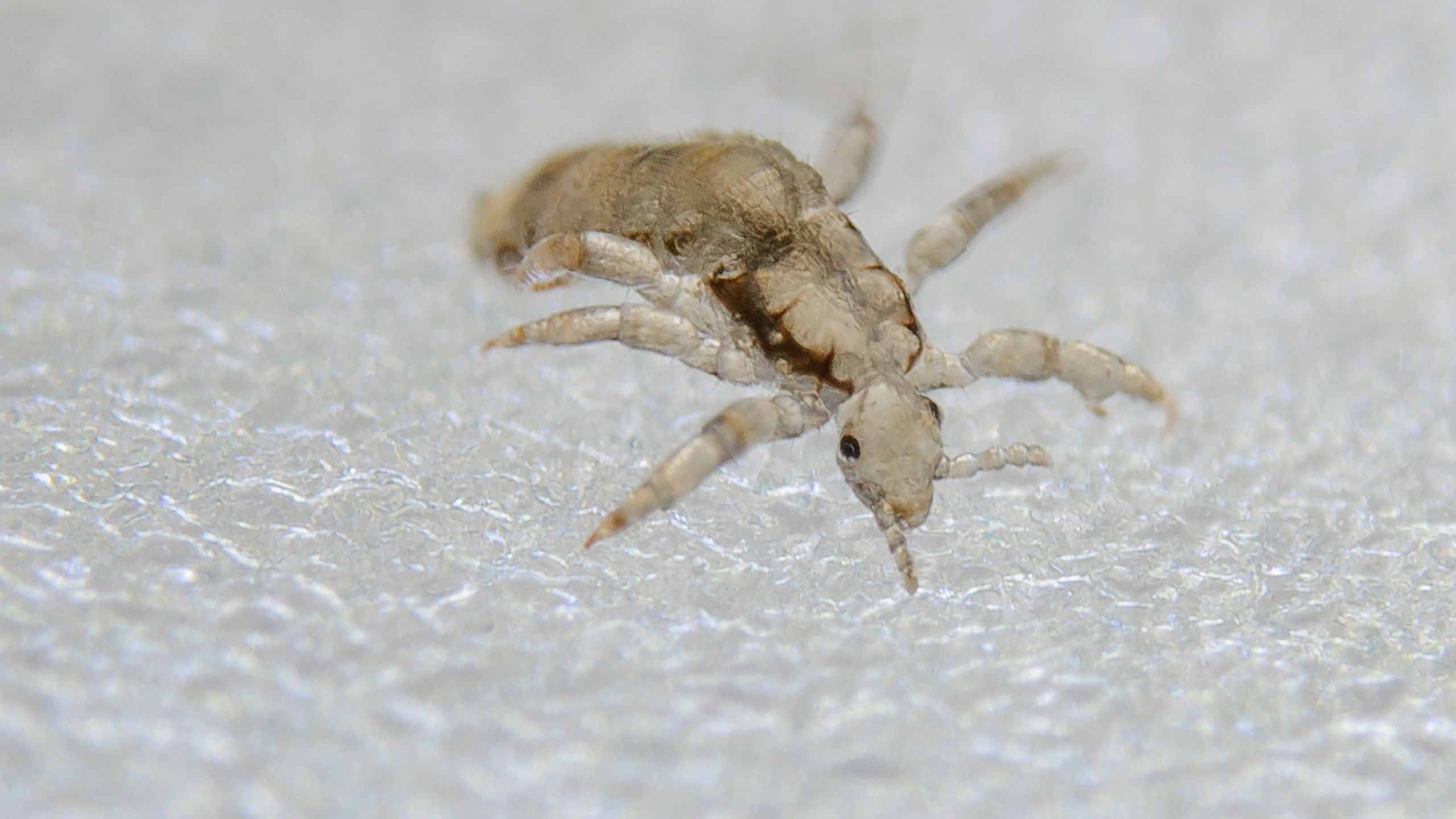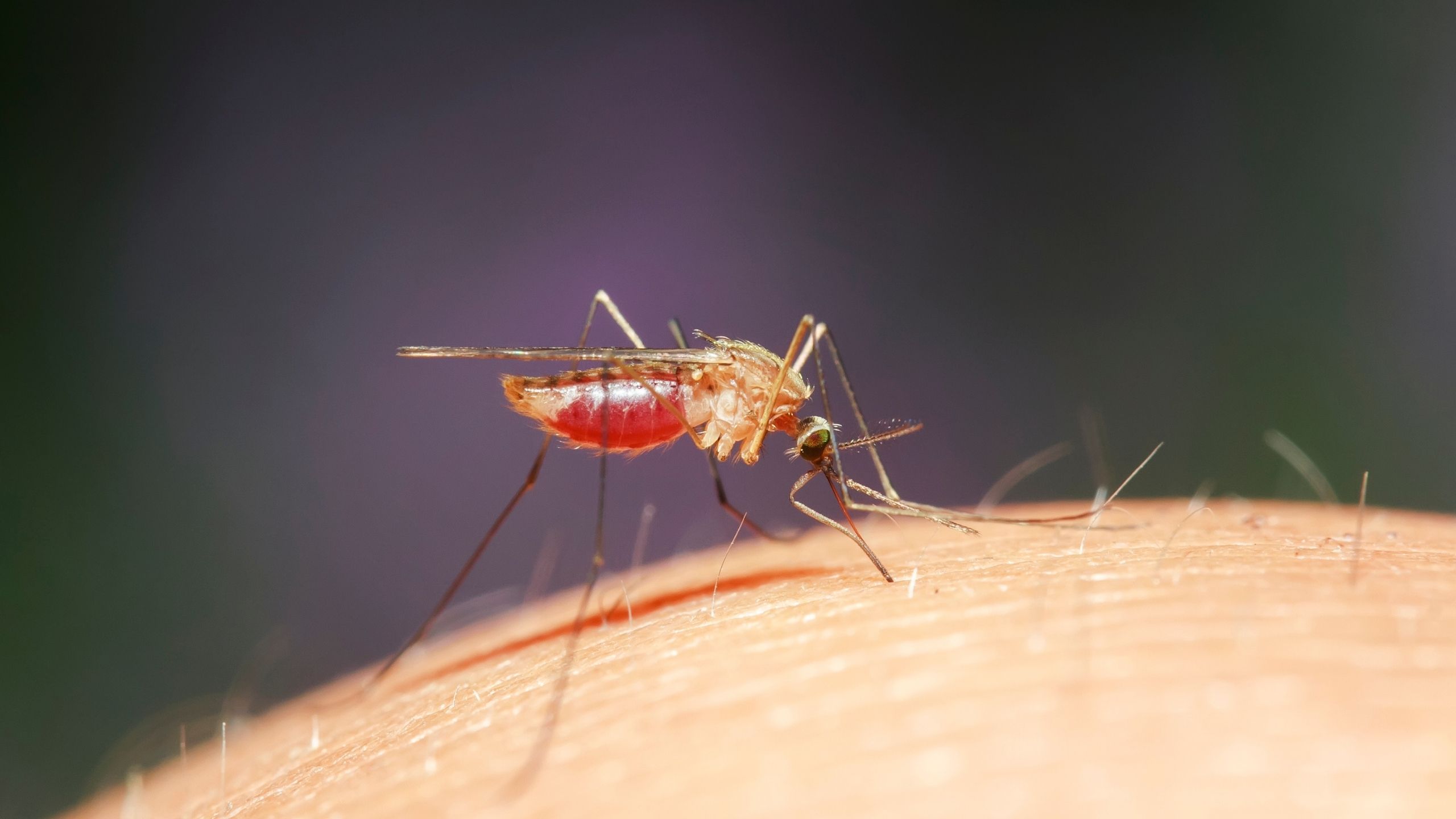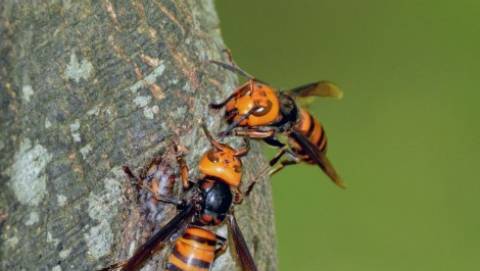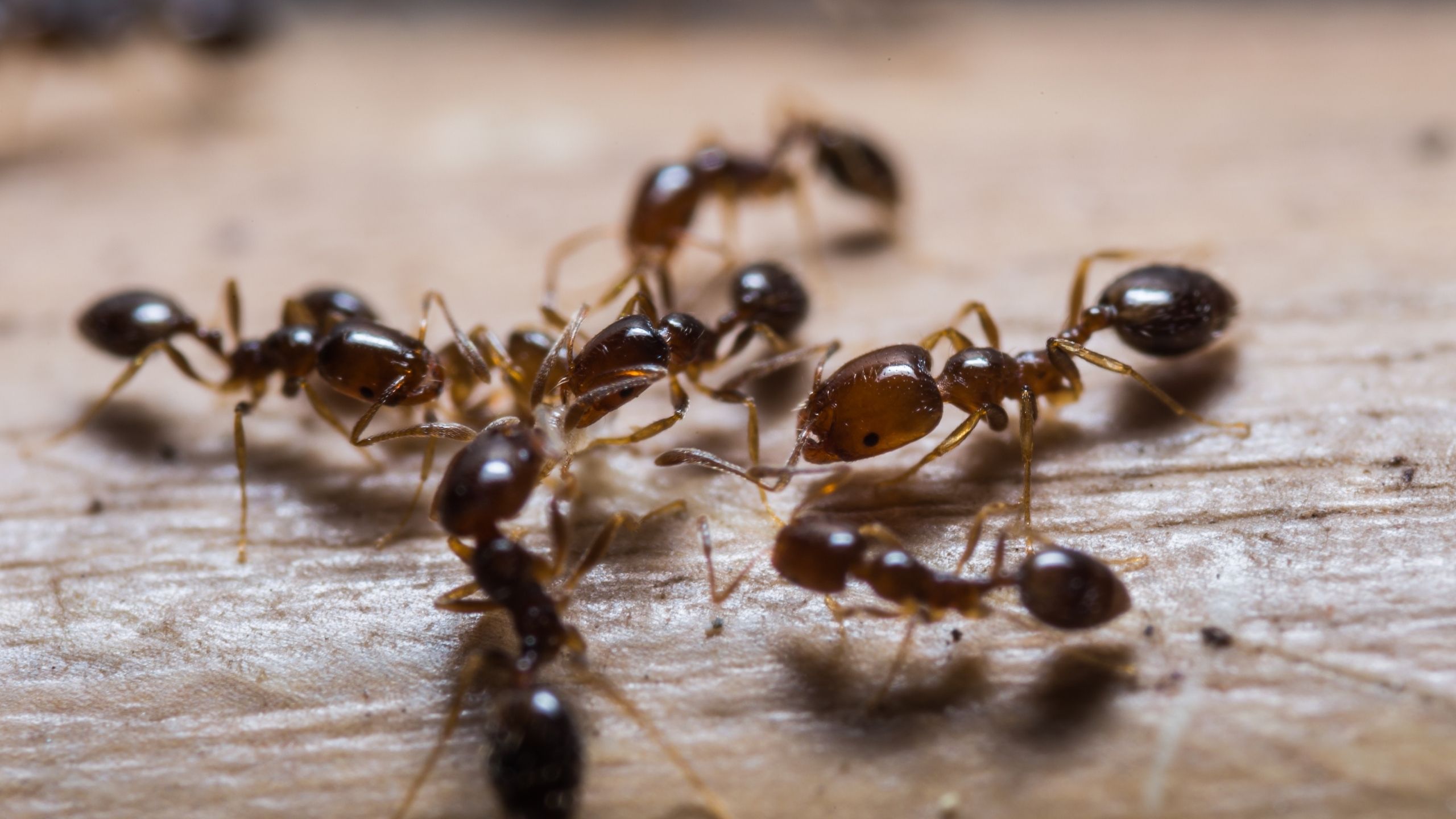Hobo Spider
April 2023
Kate Richardson, Arthropod Diagnostician • Ryan Davis, Arthropod Diagnostician (No longer at USU)
Quick Facts

- Hobo spiders and their relatives build funnel webs to catch prey.
- They are frequently found in Utah homes from August through October.
- No significant scientific evidence suggests that hobo spiders have a necrotic (flesh-eating) bite. The CDC does not list hobo spiders among venomous spider species that are toxic to humans.
- Many spiders resemble the hobo spider and nonexperts are unlikely to properly identify them.
The hobo spider, Eratigena agrestis, is a member of the funnel-web spider family Agelenidae (Fig. 1). Funnelweb spiders are long-legged, swift-running spiders that build funnel or tube-shaped retreats in turf, log piles, rock piles, and other areas around the home and yard.
The hobo spider is native to Europe but was detected in the Pacific Northwest in 1936. Over time, the hobo spider migrated to other parts of the western United States. This species is now distributed throughout northern Utah.
Hobo spiders are nonaggressive and unlikely to bite. Their old common name, “aggressive house spider,” originated from a misinterpretation of the species name “agrestis” which actually means “of the field,” describing their natural, outdoor European habitat.
Description

The hobo spider shares many traits with its relatives in the Agelenidae family and it can be very difficult to distinguish, even for experts. The only sure way to identify a spider as a hobo spider is to compare its reproductive structures that define it as a species, though the information given in this fact sheet may help you rule out similar-looking spider species.
The hobo spider typically has a brown cephalothorax (the front body region where the legs are attached) with darker brown markings and brown legs. The abdomen (the second body region) has a distinctive pattern of “chevron” yellow markings on a grey background, although this pattern can be difficult to discern without the aid of a microscope or hand lens. The pattern is generally more distinctive in immature specimens. Unlike many other similar-looking spiders, hobo spiders do not have dark bands on their legs. Because of the wide variation of color and size seen in hobo spiders and other similar species, hobo spiders cannot be identified by color alone.
Mature female hobo spiders are 9.5–16.5 mm (3/8–5/8 in.) long, and male hobo spiders are 7–13.5 mm (9/32–9/16 in.) in body length. Males have enlarged pedipalps located near the mouth, resembling short legs (Fig. 2).
Identification With A Microscope
Properly identifying a hobo spider requires a microscope and knowledge of spider anatomy. Unfortunately, coloration is one of the least reliable characteristics for identification but one of the most commonly used, leading to many misidentifications. The following characteristics should be used when identifying a hobo spider.
Plumose Setae: The family Agelenidae, the funnel-web spiders, all share the characteristic of having plumose setae on their legs. These fine, almost clear hairs have a feather-like appearance. A microscope or strong hand lens is needed to see these hairs. Do not be confused by the large black spines, or smaller, thick black hairs. The plumose hairs lay nearly flat against the body and can be difficult to see (Fig. 3).
Plumose setae do not differentiate between species of Agelenidae, but if a spider lacks these setae, then a hobo spider can be ruled out.
Eye Arrangement: Hobo spiders and domestic house spiders have eight eyes in two rows with the outer eyes of the top row slightly lower than the middle two (Fig. 4).


Cheliceral Retromargin: Six to eight teeth can be found on the cheliceral retromargin of a hobo spider (Fig. 5). The chelicera is the pair of appendages housing the fangs found in front of the mouth of the spider. The retromargin is the area near the fangs located on the posterior (back) side of the chelicera (closest to the mouth of the spider). This structure can be looked at by removing the chelicera of the spider and turning them over.
Male Pedipalps: The male “boxing gloves” or pedipalps are part of the spider’s reproductive system. The hobo palp has two prongs (Fig. 6), while closely related species such as the domestic house spider and the giant house spider will only have one prong.


Life Cycle

The exact length of the hobo spider life cycle in Utah is not known, but it is suspected that hobo spiders take about 2 years to develop into adults. Eggs sacs are deposited in the fall (Fig. 7) and typically hatch in late spring. Juvenile hobo spiders overwinter before reaching maturity the following year. Males will seek females for mating from August through October, and this is when they are most frequently encountered in homes. Mated females begin laying egg sacs in September, with one to four egg sacs produced. Male spiders die after mating.
Habitat
Hobo spiders are commonly found outdoors in sheltered areas. Places such as wood and rock piles, retaining walls, tall grass, and foundation cracks provide excellent places where they can make their characteristic funnel webs (Fig. 8). The spider waits at the small hole at the bottom of the funnel for prey to make contact. It will then emerge from the hole to envenomate its prey.

Funnel-web spiders have “feet” designed for walking on their webs. Large hobo spiders aren’t designed to climb smooth surfaces in homes, such as painted walls. Consequently, when they enter homes, they are usually found at ground level in the basement because they cannot climb walls or slick surfaces to escape. A common place to find hobos is in the bath tub or sink because the porcelain or plastic is too slick for them to climb. However, this is not to say hobos can’t climb. They can easily climb textured surfaces such a fabric and carpet. Wandering males and females may occasionally become trapped in clothing, bedding, shoes, or other objects on the floor.
Management
Hobo spiders, like other spiders, should be considered beneficial, but sometimes their presence, especially in homes, is unwanted. Small populations are often better tolerated than treated. However, spiders in and around the home can be minimized using a combination of all or some of following techniques.
Monitoring
- Place sticky traps purchased at lawn and garden shops around the home’s baseboards.
- Placing traps around the home may show spider or insect “hot-spots.” Control efforts should be targeted in those areas.
- Traps should be folded and placed firmly against the baseboards where children and pets cannot access them.
- During peak season (August–October) consider placing up to two traps in every room to increase trapping/control.
Cultural Control
- Replace door sweeps on all outside doors. The sweep must come in complete contact with the ground surface and both sides of the doorway to ensure spider exclusion.
- Seal all foundation cracks and crevices leading into the home with silicon caulking or appropriate sealant.
- Install weather stripping around doors and windows, especially all doors leading to the outside.
- Keep window screens in good repair.
- Vacuum regularly. This can reduce the insect prey spiders take advantage of indoors.
- Minimize clutter both inside and outside the home. Hobo spiders use secluded places to hide and lay egg sacs, so removing suitable hiding places can help discourage spiders from sticking around.
Chemical Control
- Pyrethroid/silicate dust formulation can provide some control when placed in crawl spaces, cracks, and crevices. These should only be used in areas where people won’t come in contact with the chemicals.
- Non-residual aerosol sprays can be used to directly spray spiders; this will not be effective for spiders that are not directly contacted.
- Exterior perimeter treatments are best timed in mid-May to mid-June when egg sacs are hatching.
- Capsule suspensions/microencapsulated and wettable powder formulations work best for spiders.
Hobo Bites




People fear hobo spiders because information about their potentially necrotic (flesh-eating) bite has been perpetuated in medical literature and the media. More recent evidence would suggest, however, that the likelihood of hobo spiders having venom of medical importance to humans is extremely unlikely. There is no significant scientific evidence to suggest that this is the case.
The CDC does not list hobo spiders among venomous spider species that are toxic to humans.
Hobo spiders will bite in defense, causing mild pain and redness, but in general, they are not aggressive nor of significant health concern.
Bite Prevention Tips
- In August through October, there is usually an influx of hobos and other spiders entering the home. During this time consider removing any bed skirts and any other nearby objects or materials that might let wandering spiders crawl onto your bed. It can also be helpful to move the bed out about 8 inches from any walls.
- Take extra caution during these months when picking clothing up off the floor or from laundry baskets. Spiders hiding in clothes can be mistakenly grabbed, resulting in a bite.
- Keep children’s toys, clothes, blankets, etc. off the floor wherein spiders might want to hide.
If you observe a spider bite, the best practice is to catch the spider for identification. Finding a spider in the house after a mystery bite or skin irritation does not implicate the spider. Take the spider to a local expert for identification.
Clean and disinfect the bite using a topical antiseptic and cover with a sterile bandage. Monitor the bite and visit a doctor if symptoms progress. Secondary infections are possible after any spider or insect bite and can become serious if left untreated.
Look-Alikes
The false reputation of hobo bites have led to these spiders being targeted with severe management practices. Unfortunately, other spider species that look very similar to the hobo spider (Fig. 9) have also been the target of these efforts. In Utah, there are several species of spiders, including those in the Agelenidae and Lycosidae families, that are often mistaken for hobo spiders.
Some common hobo spider look-alikes include other
members of the funnel-web spider family (Agelenidae),
such as the domestic house spider (Tegenaria domestica;
Fig. 10) and grass spiders (Agelenopsis spp.; Fig. 11) which
are commonly found in home gardens.
Wolf spiders (Lycosidae; Fig. 12) are also often confused
with hobos due to their intimidating size. However, wolf
spiders are often larger, reaching up to 1 inch in size, and
they do not construct webs.
Additional Resources
BugGuide, produced by Iowa State University’s Department of Plant Pathology, Entomology, and Microbiology, provides identification, images, and information for insects, spiders, and their kin for the U.S. and Canada.
- Hobo spider: https://bugguide.net/node/view/31446/bgimage
- Domestic house spider: https://bugguide.net/node/view/31445/bgimage
- Grass spider: https://bugguide.net/node/view/2001/bgimage
- Wolf spider: https://bugguide.net/node/view/1967/bgimage
References
- Baird, C. R., & Stoltz, R. L. (2002). Range expansion of the hobo spider, Tegenaria agrestis, in the northwestern United States (Araneae, Agelenidae). The Journal of Arachnology, 30(2), 201–204.
- Gaver-Wainwright, M. M., Zack, R. S., Foradori, M. J., & Lavine, L. C. (2011). Misdiagnosis of spider bites: Bacterial associates, mechanical pathogen transfer, and hemolytic potential of venom from the hobo spider, Tegenaria agrestis (Araneae: Agelenidae). Journal of Medical Entomology, 48(2), 382–388.
- McKeown, N., Vetter, R. S., & Hendrickson, R. G. (2014). Verified spider bites in Oregon (USA) with the intent to assess hobo spider venom toxicity. Toxicon, 84, 51–55.
- National Institute for Occupational Safety and Health (NIOSH). (2021, September 15). Types of venomous spiders. Centers for Disease Control and Prevention, U.S. Department of Health and Human Services.
- Utah Pests. (n.d.). Top 20 arachnids. Utah State University Extension.
- Vetter, R., & Antonelli, A. (n.d.). How to identify (or misidentify) the hobo spider. Colorado State University, PLS 116.
- Vetter, R. S. (2015). Pest notes: Hobo spider [UC ANR Publication 7488]. University of California Statewide IPM Program.
- Vetter, R. S., & Isbister, G. K. (2004). Do hobo spider bites cause dermonecrotic injuries? Annals of Emergency Medicine, 44(6), 605–607.





















